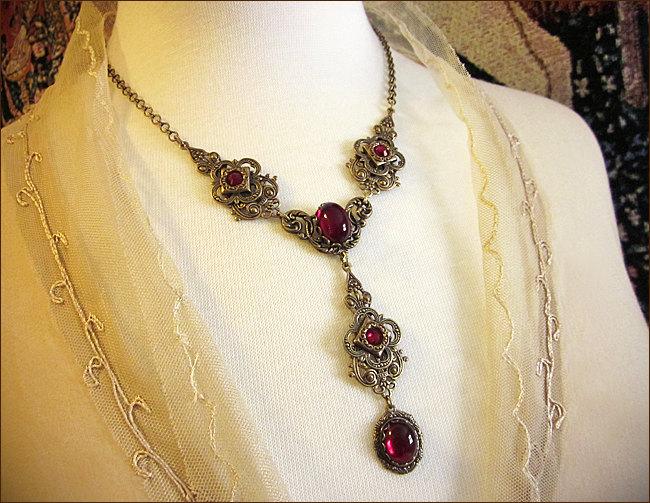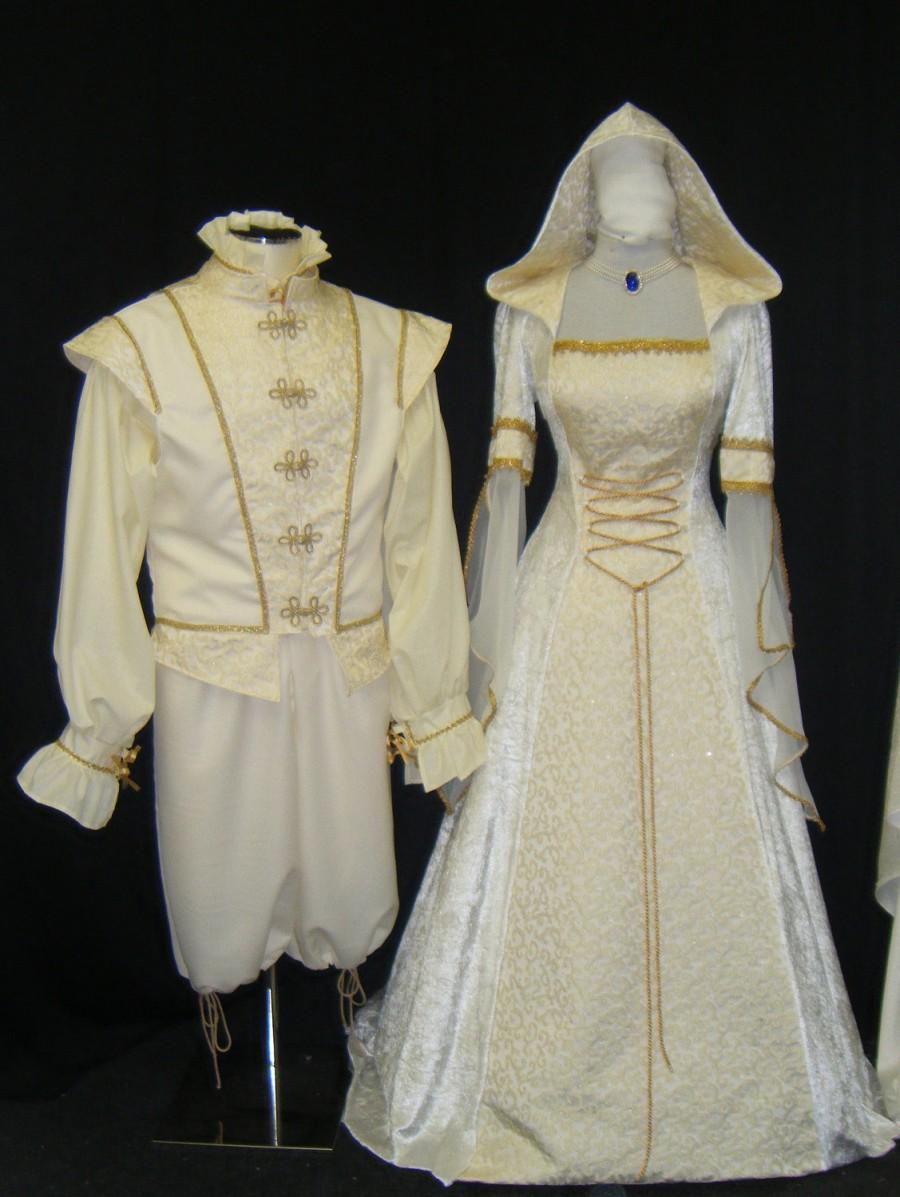

Damask fabric was used as the invitation which was bound by a this gold leather cord. Our invitation suite and calligraphy details from Alonsy-Alonso featured a wide range of design. Damask linens, soft leather and velvet were featured throughout the entire design. Because Medieval weddings of wealth featured jeweled tones, we brought in tones of royal blue and garnet red as well! Another way that we showcased the wealth of weddings of this period was to feature different textures. The foundation of the palette featured warm golden tones mixed with blush hues.

#Garnet medieval wedding dress full#
Our goal was create a full wedding design concept that was regal, fine art focused and refined that elegantly elevated the castle’s Medieval charm.Įach element included in the design was chosen with intention and was captured beautifully by Celine Chhuon Photography. Whether you are captivated by history, revel in craftsmanship or delight in symbolism we have a piece suitable for any enthusiast.From floral designer Florésie: " The design inspiration for this autumn wedding editorial came from Château de Brancion, a Medieval castle where our shoot took place. These extraordinary rings are now a rare find, with each surviving Medieval ring providing an intriguing insight into times past. Laws were passed preventing commoners from wearing jewellery with precious stones, pearls and excess amounts of gold or silver. In the late Middle Ages, from the 13th century onwards, jewellery was reserved for the higher ranks of society such as aristocratic and noble houses. Amethyst was supposed to prevent drunkenness and intoxication, while turquoise was considered to have healing powers, with the belief it could absorb disease by drawing it from the body into the stone. Sapphires were believed to have magical powers that could cure snakebites, expel witchcraft and enable the wearer to detect fraud. In Medieval Europe, it was believed that wearing diamonds or carrying them on your person would ward off the plague.

Superstition abounded, with certain gemstones attributed with mystical powers and worn for protection. Throughout Europe, during the Middle Ages, belief in magic and sorcery was pervasive. Some jewels even had magical inscriptions, believed to protect the wearer. Christian iconography flourished and the engraving of Christian symbolism onto gem stones was popular. However, a wide range of gem stones were commonly used including sapphire, garnet, turquoise, amber, coral and freshwater pearl, with most gems cut into a cabochon cut with rounded contours. Curative rings were meant to cure diseases and hollow rings served as containers for holy relics or sometimes even poison.Ĭolour, provided by precious gems and enamel, was highly valued with ruby and emerald being the most prized. Devotional rings and signet rings were worn to prove the identity of the wearer and used as seals for stamping documents to authenticate them. In Medieval times, rings were not just decorative, they were worn for a practical purpose. Lower ranks of society wore base metals, such as pewter and copper. Royalty and the higher ranks of society wore gold, silver and precious gems. Jewellery was used to signal social status, with men being as highly adorned as women. The jewellery worn in medieval Europe reflected a profoundly hierarchical and status-conscious society. Medieval rings, dating from circa 5 th- 15 th century AD, offer a fascinating glimpse of a bygone era.


 0 kommentar(er)
0 kommentar(er)
